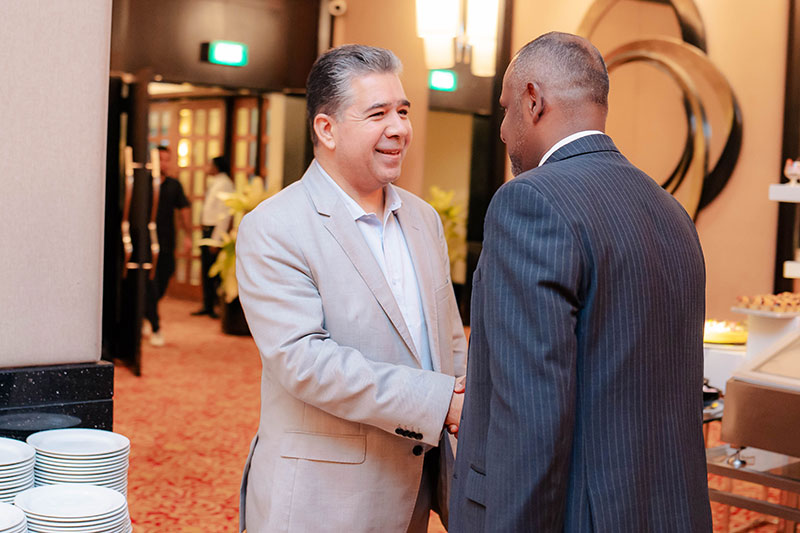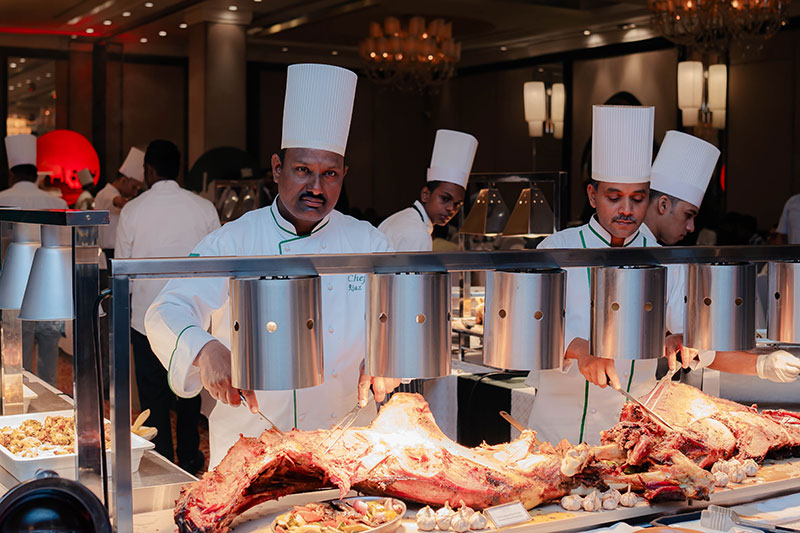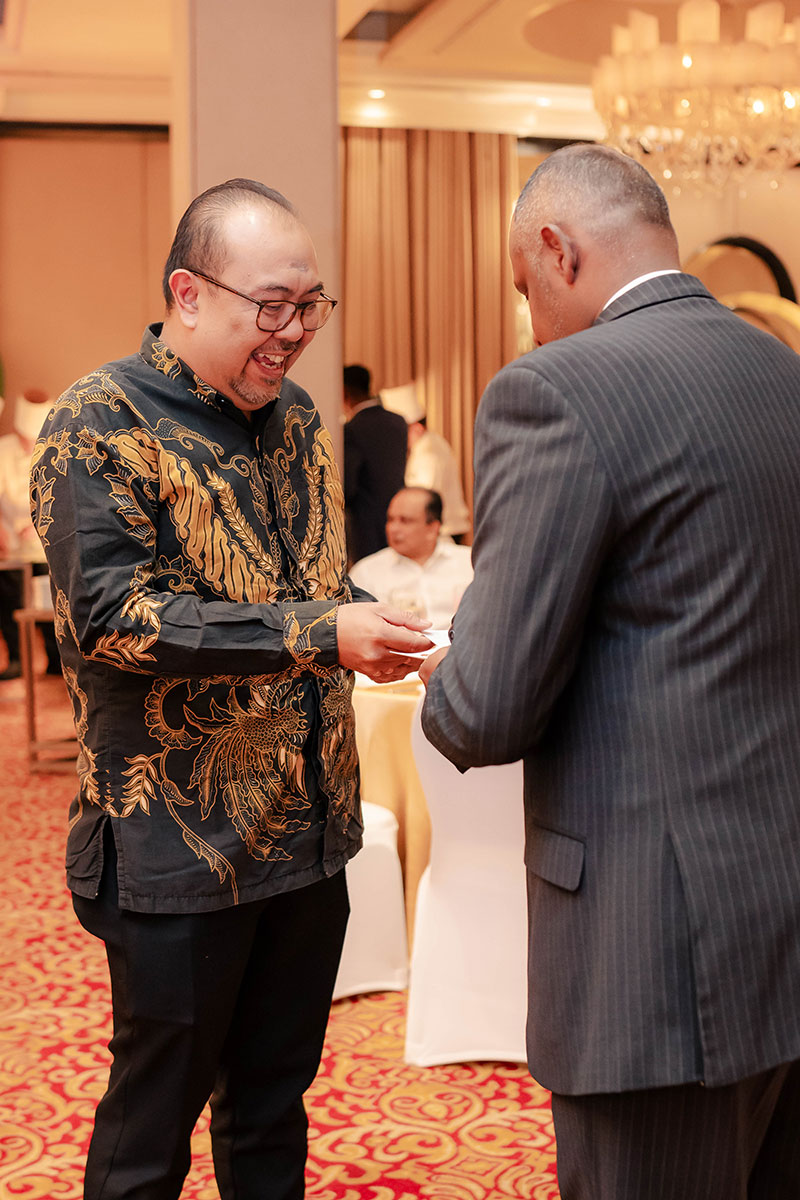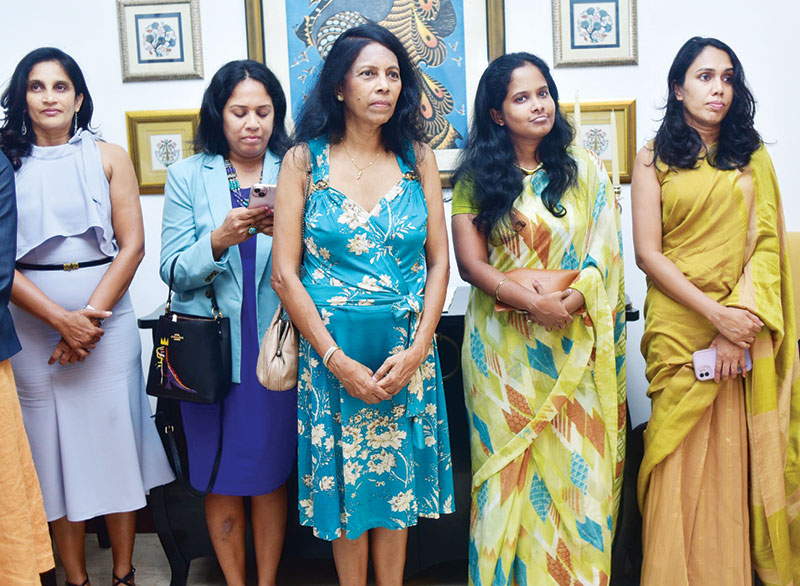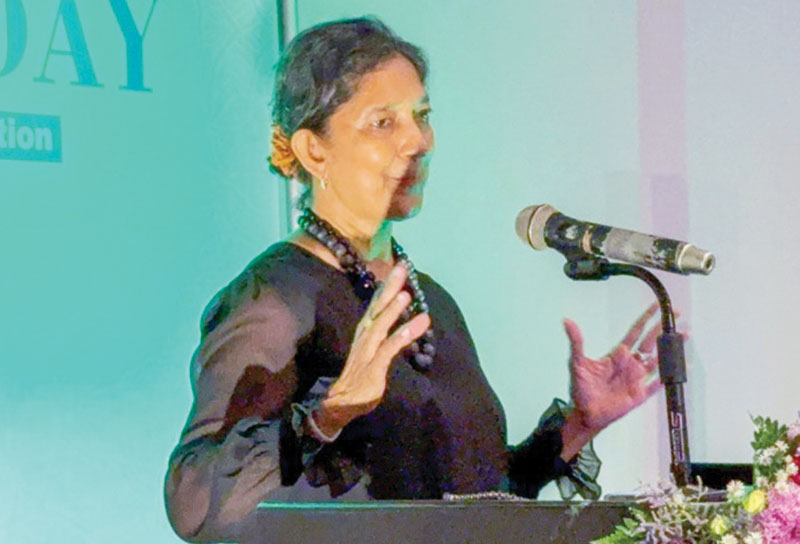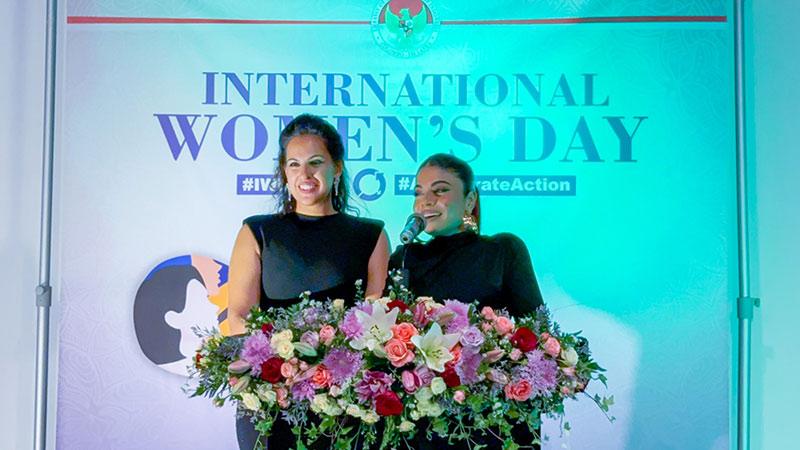Life style
All about Sushi
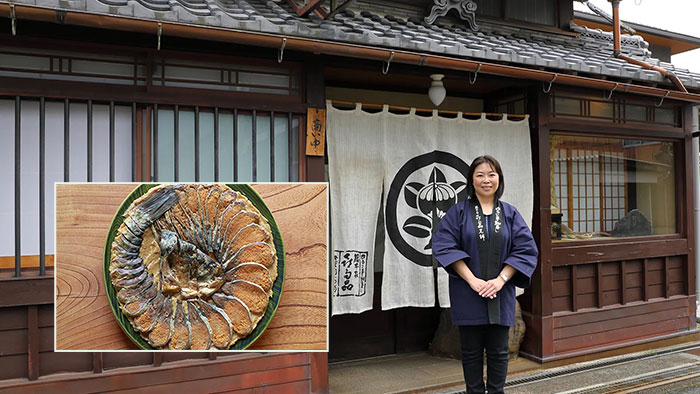
For the past 18 generations, one family has preserved a 400-year-old recipe showing how sushi once tasted, and it doesn’t use raw seafood, but fish aged for three years.On any fine day in spring, when the sky is clear and the waters of nearby Lake Biwa are calm enough for locals to go carp fishing, you can find Mariko Kitamura and her husband Atsushi at their shop Kitashina in the small Japanese town of Takashima making sushi.
With the dexterity and speed you’d expect from sushi chefs, they scrape off the fish’s scales with a knife, remove its gills and carefully angle a skewer down its throat to remove its innards without penetrating its flesh. But what happens next is truly unexpected. They pack the fish with salt, layer them in a wooden tub, weigh the lid down with 30kg stones and leave them to cure for two years. Each fish is then thoroughly rinsed, dried in the sun for a day and fermented for one more year in cooked rice before it is ready to be eaten.

This is not the kind of sushi you might get in New York or London, or even easily in Tokyo for that matter. It is the predecessor of what the world now knows as sushi – the original sushi – called narezushi (fermented sushi). Kitamura’s family has been making it for 18 generations, ever since Kitashina opened in 1619 in this remote corner of Shiga prefecture, and today the centuries-old shop is one of a handful of places left in Japan, and the world, where you can experience how “real” sushi is supposed to taste.
Narezushi
is thousands of years old and traces its roots back to the rice fields of China, where the method of curing in salt and fermenting the freshwater fish that lived in the paddies was developed to give the seasonal catch a long shelf life. It is believed to have arrived in Japan at the country’s ancient capital of Nara sometime in the 8th Century. For the next 1,000 years, until it evolved in the 18th Century into the slices-of-raw-seafood-draped-over-mounds-of-rice dish we know today, narezushi was a commonly consumed, nourishing and tasty source of protein. People would eat a few pieces of it with the fermented rice. They’d put a slice of it in hot water to make a medicinal tea. And they enjoyed it as a delicacy with sake at the tables of aristocratic and samurai families.
As a testimony to narezushi’s importance and the skill required to make it, Kitamura’s ancestor 18 generations back, Kuemon Yamagataya (Kitashina’s founder), was appointed to the entourage of Lord Mitsunobu Wakebe when he moved to Takashima in 1619 to take charge of the castle at the request of Japan’s new military leader, Ieyasu Tokugawa.
Unlike modern sushi, which typically includes ocean seafood, Narezushi was made – and still is in small pockets of Japan – with pretty much anything that swims in fresh water, including tiny loach, ayu (small sweet fish) and eel. But the kind of narezushi Kitashina makes is much rarer and is considered the true prototype of sushi. It is called funazushi after the type of fish used: funa (carp).
Carp is the king of freshwater fish in Japan, with the most prized being Japanese crucian carp (nigorobuna), which is the original type of carp used to make funazushi and the kind Kitashina features. It is a wild, rich-tasting species that’s found only in Lake Biwa, Japan’s largest lake and one of the oldest lakes in the world.
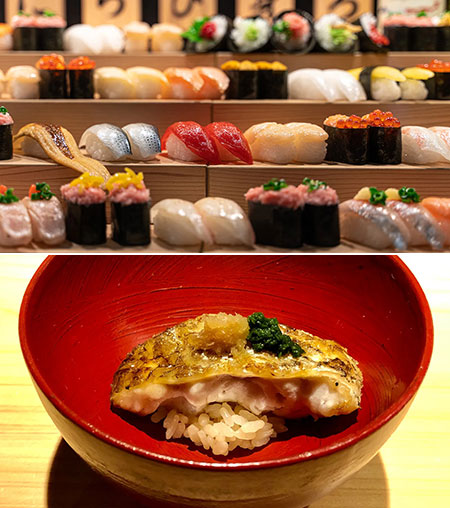
Today, there are just five shops around the lake that specialise in making high-quality funazushi, as nigorobuna has become very rare and hard to obtain. Other places, including souvenir shops across the prefecture, use more common types of carp and offer a comparatively ready-made version – funazushi cured in salt for one summer and fermented in rice for a few months in autumn – for tourists seeking to try its reputedly pungent taste. Among them all, Kitashina is the one making the most authentic funazushi by using nigorobuna and applying the oldest, most traditional preparation methods.
The good stuff is hard to get, though. Peak demand for Kitashina’s funazushi is from November to February when customers order it as a New Year’s treat, and later, to celebrate the arrival of spring. It can be sold out then, but a fresh batch, so to speak, is ready every year in mid-summer.
Before trying funazushi, Kitamura told me that it tastes like cheese – which it does, in its lacto- fermented, sour, salty and umami-rich way. It’s reminiscent of a funky and creamy type of cheese, given that Kitashina makes funazushi with the roe-laden female nigorobuna in season from March to May. Like many mature cheeses, funazushi is an acquired taste; a food that takes some getting used to. But then so is eating raw seafood for many people.
Kitamura, who attended the Kyoto Culinary Institute, took over the family business in 2013 when her father was ready to retire – partly because of her interest in food, but more importantly, to save the business from, literally, dying out. The beneficial micro-organisms that have thrived in her family’s traditional kioke wooden tubs for centuries, and which naturally produce the fermentation that gives Kitashina’s funazushi its authentic flavour, would die if the tubs were ever emptied.
Today, funazushi has become a luxury food across much of Japan, with Kitashina being the shop at which to buy it because of its refined, mellow flavour. According to Kitamura, that’s in part thanks to her grandfather, who, despite sushi’s growing popularity, continued to stick to Kitashina’s 400-year-old recipe of long fermentation and changing the rice once during the process. He also introduced the practice of serving it on a bed of sake lees – the sweet, rich paste left after pressing sake from the fermented rice mash – making the dish even more luxurious. Kitamura’s father, in turn, created the “Tomoe” style of beautifully presenting funazushi as a fan fashioned from the slices of a whole fish.
Kitashina’s funazushi is now featured on the menus of some of the most exclusive ryotei (traditional high-end Japanese eateries) and other top restaurants in Kyoto, as well as at similar establishments in Tokyo. Taking a cue from Kitamura’s grandfather’s presentation, chef Takumi Murata, of the L’Hotel de Hiei located atop the historical Mount Hiei overlooking Kyoto, serves Kitashina’s funazushi with wine jelly as an appetiser in the hotel’s main restaurant.
Compared to narezushi’s millennia-old history, the sushi we eat today is a mere footnote. Technically called hayazushi (fast sushi), it was created in Edo (modern-day Tokyo) in the late 18th Century as a fast-food version of narezushi to meet the needs of the city’s busy people. The newly bottled seasonings of fermented rice vinegar and soy sauce were used to recreate the essential sour, salty and rich taste of funazushi in the fresh seafood that was caught in Tokyo Bay. First, rice vinegar was added to cooked rice to speed up the fermentation process to just a few days. This practice also made the rice more edible. Later, freshly cooked rice was simply soaked with rice vinegar.
 The gamechanger, however, was soy sauce, which began to be mass produced in the 1700s. As Issei Tomioka, a former employee at the Tokyo Metropolitan Central Wholesale Market in Tsukiji, wrote in his series The History of Nihonbashi Uogashi, “sushi would likely not have been developed had it not been for soy sauce.” Brewed for at least two years, traditional soy sauce is a concentrated form of salty-savoury umami. Initially, it was used to marinate the seafood toppings for a few hours to prevent them from spoiling and also to make them more appetising. As the fresh quality of the seafood improved, sushi was served raw with soy sauce as a condiment.
The gamechanger, however, was soy sauce, which began to be mass produced in the 1700s. As Issei Tomioka, a former employee at the Tokyo Metropolitan Central Wholesale Market in Tsukiji, wrote in his series The History of Nihonbashi Uogashi, “sushi would likely not have been developed had it not been for soy sauce.” Brewed for at least two years, traditional soy sauce is a concentrated form of salty-savoury umami. Initially, it was used to marinate the seafood toppings for a few hours to prevent them from spoiling and also to make them more appetising. As the fresh quality of the seafood improved, sushi was served raw with soy sauce as a condiment.
Sushi is a remarkable example of the way Japan adopts foods from other countries, in this case China, and then adapts and assimilates them into its own rich culinary culture. After thousands of years, sushi continues to evolve.
Currently, the pendulum is swinging backwards, and sushi chefs in Japan are now aging their seafood toppings for days, weeks and even months to give all kinds of fish the creamy texture and savoury richness of funazushi. Koji Kimura, chef-owner of the two-Michelin-starred Sushi Kimura in Tokyo’s Setagaya ward, has been serving only aged sushi since 2008 and is
considered its modern-day pioneer.
Closer to Takashima, Yoichi Akashi, the chef at Sushi Zabo in Miyazu City, is following the tradition of Kitashina’s funazushi by taking an already rich-tasting, fatty fish like akamutsu (rosy seabass) caught fresh from the nearby Sea of Japan or East Sea (as it is referred to in Japan and Korea, respectively).
But even as chefs rediscover the potential of weeks- and months-aged sushi, Kitamura is staying well ahead of them. In a corner of Kitashina’s storeroom, she has a small wooden tub of funazushi that has been fermenting for eight years and counting.– BBC
Life style
Celebration of unity and tradition at Iftar dinner
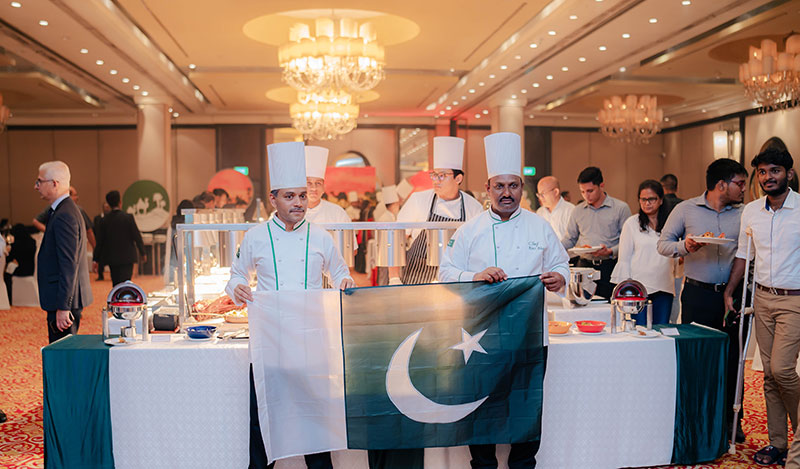
In a grand celebration of unity and tradition, Cinnamon Lakeside Colombo hosted an exclusive and elegant Iftar dinner at the prestigious King’s Court. This remarkable evening, hosted by Nazoomi Azhar, General Manager of Cinnamon Lakeside Colombo, brought together a distinguished gathering of ambassadors, key figures, top corporate executives, and esteemed members of the media.
The event showcased a spectacular array of culinary delights, with a highlight being the masterpieces crafted by renowned Pakistani Chef Riaz Bhatti. His exquisite creations, alongside an extensive selection of traditional and contemporary delicacies of Pakistani dishes, left guests in awe of the lavish spread and exceptional flavors.
Among the standout dishes of the evening were the rich and aromatic Mutton Raghni Josh, the flavorful Mutton Shahi Qorma, and the perfectly spiced Peshawari Beef Chapli Kabab. Guests also delighted in the Lahori Chicken Tikka Boti and the indulgent Chicken Peshawari Karahi, which added a taste of authenticity to the menu. The Iftar spread was further complemented by traditional desserts such as Gulab Jamun, Shahi Tukda, and Ras Malai, providing a sweet ending to the feast.
The atmosphere was one of warmth and hospitality, reflecting the spirit of Ramadan while offering a truly memorable experience. Guests were highly impressed with the impeccable service and the thoughtfully curated menu, making this Iftar dinner a standout occasion in Colombo’s social calendar.
Cinnamon Lakeside Colombo, under the leadership of Nazoomi Azhar, continues to set the benchmark for luxury hospitality, delivering unforgettable experiences through its commitment to excellence.
Life style
Women -building blocks in shaping history of Turkiye

 In the Republic of Turkiye women have been one of the building blocks in shaping Turkiye for centuries. However, especially since the founding of the Republic, Turkiye has been one of the leading countries in the world, especially in terms of the political visibility of women. Women were given the right to vote long before women were given political rights in many democratic and modern countries.
In the Republic of Turkiye women have been one of the building blocks in shaping Turkiye for centuries. However, especially since the founding of the Republic, Turkiye has been one of the leading countries in the world, especially in terms of the political visibility of women. Women were given the right to vote long before women were given political rights in many democratic and modern countries.
Turkish women are known for their unwavering determination and resilience. They exhibit remarkable dedication and courage in pursuing their goals and challenge injustice. Their hard work and perseverence contribute to their advancement of society. These statements were expressed by the Deputy Chief of Mission of Turkiye M/S Merve Goozde Otlu at the residence of the Turkish Ambassador in Sri Lanka, on the occasion of the International Women’s Day.
This day is also important for Turkish women, who have played a vital role in shaping Turkish society, from the early days of our Republic to the present said the Deputy Chief of Mission. In her speech she also pointed out that the founder of the Republic, Mustafia Kemal Ataturk, has an important place in the hearts of all Turkish people, but his visionary leadership for women’s rights are especially precious for all women of Turkiye.
She explained “Ataturk strongly believed in women’s equality and emphasized that a modern and progressive society could only be achieved if women had equal opportunities as men’’
“Women were encouraged to participate in all areas of life, including education, work life and politics. One of the most remarkable steps Ataturk took was granting women the right to vote and as early as 1930, women were able to run for office at the local elections and in 1934 women were granted this right long before many other countries (One year after that, there were already 18 women MPs). When we look at Turkish history, we see countless inspiring women who have shaped our country, playing crucial roles achieving many milestones. These women have proved that Turkish women could achieve greatness in any field from science to business, from arts to sports, if given the opportunity, she remarked.
Turkish women have also made a significant contribution to diplomacy, a field often seen as male-dominated, she remarked.
For decades, Turkish women have been representing our country with strength and determination on the global stage. The first woman diplomat Mrs. Adile Ayda was recruited in 1932, while Ambassador Filiz Dinemen is the first woman Ambassador of Turkiye, assigned to the Hague in 1982.
Women representation has been increasing in the Ministry of Foreign Affairs, constituting almost 40% of the Ministry.
It is a personal honour for me to serve in a country like Sri Lanka, which gave the world the first female Prime Minister in history, Sirimavo Bandaranaike, she said with pride.
Her leadership showed that women can take on the highest responsibility and be a driving force not just for women but for the whole society.
The contribution of women in Turkiye in the field of Science and Technology is far reaching. She said in Turkiye, a prominent scientist who worked for NASA, whose research was instrumental in the legendary 1962 Apollo mission. She is Dihlhan Eryunt, was the recipient of the NASA Appolo Achievement Awards she said with pride.
The First Secretary, Imren Kaygisiz said Turkish women who have contributed to the development of the country and thier enduring impact on society who are still continuing to inspire strength,resilience and success of women
The Commercial Counsellor M/s Gamze Erc an also paid tribute to the founder of Modern Republic of Turkiye, Mustafa Kemal Ataturk who gave importance to education of Turkish women and leader believed that development of a nation depends on a strong education foundation.
The evening had all the trappings of glamour followed by high tea.
Life style
Sri Lanka showing strong commitment to gender equality
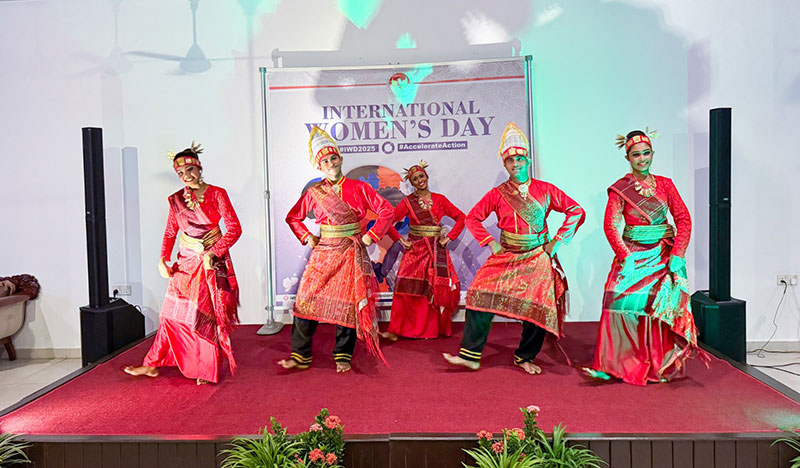
The Embassy of the Republic of Indonesia in sri Lanka hosted the International Women’s Day ceremony at thier residence.
Ambassador of Indonesia Dwi Gustina Tobing invited a large gathering of invitees including the Minister of Women and Child Affairs Saroja Savithri Paulraj who was the Chief Guest. CBL Group Managing Director Sheamalee Wickramasighe, popular musician Umaria Sinhawansa and Stephanie Siriwardena also addressed the gathering. The ambassador looking elegant was busy welcoming the guests at her residence.
An evening of camaraderie, glitz and glamour. The event featured an insightful session aimed to empower women, and served as a tribute to the commitment of women who has contributed immensely. The ambassador in her speech said by celebrating the achievements of women and amplifying their voices, we pave the way for a more inclusive and equitable society, where gender does not hinder opportunity but enriches collective experiences. Here is an excerpt from the ambassador’s speech.
A warm welcome to all of you. It is an honour to host this reception in commemoration of International Women’s Day 2025.
She said ” This year’s theme, “Accelerate Action”, is a powerful call to all of us. It underscores that equality cannot wait, and that all sectors of society must work together to speed up progress in women’s rights and empowerment.”
- CBL group managing director Sheamalee addressing the gathering
- Stephani and Umaria
Around the world, we have seen tremendous strides toward gender equality in politics, economics, and social spheres. Women are increasingly taking up leadership roles, contributing to economic growth, and shaping the future of our societies.
In Indonesia, we are proud of the progress we have made in advancing women’s participation. She said
She reiterated that 127 women were elected to parliament, making up 22.1% of the seats—the highest in our post-reform history. However, this is still below our target of 30%, which means there is room for improvement.
Our new cabinet includes 14 women, both as ministers and deputy ministers, demonstrating our commitment to gender-inclusive governance.
Beyond politics, women are the backbone of Indonesia’s economy. Micro, Small, and Medium Enterprises (MSMEs) contribute over 60% to the national GDP, and 64.5% of these businesses are managed by women.
Additionally, Indonesia ranks among the top four countries globally for female business leaders
She pointed out Sri Lanka, too, has made significant strides in women’s empowerment. When I met with Minister Saroja Savithri Paulraj last week, we discussed the progress Sri Lanka has made in increasing women’s representation in politics and the economy. From women entrepreneurs driving economic growth to initiatives supporting women in leadership, Sri Lanka is showing a strong commitment to gender equality.
Many countries have made progress in advancing women’s empowerment, yet, despite this progress, we must recognize that challenges remain. Women still face barriers to equal pay, leadership opportunities, financial inclusion, and social mobility. Gender-based violence, discrimination, and unequal access to resources continue to hinder the advancement of women in many parts of the world.
This is why collaboration is crucial. By sharing experiences, policies, and best practices, we can accelerate meaningful action to bridge the gender gap.
We must continue working together, fostering partnerships that empower women economically and socially. Indonesia is committed to strengthening collaboration with Sri Lanka and other nations to create more opportunities for women, recognizing their immense importance. Invitees were able to enjoy authentic Indonesian delicacies specially curated by the Ambassador herself.
By Zanita Careem
-

 Sports5 days ago
Sports5 days agoSri Lanka’s eternal search for the elusive all-rounder
-

 News4 days ago
News4 days agoBid to include genocide allegation against Sri Lanka in Canada’s school curriculum thwarted
-

 News6 days ago
News6 days agoGnanasara Thera urged to reveal masterminds behind Easter Sunday terror attacks
-

 Sports17 hours ago
Sports17 hours agoTo play or not to play is Richmond’s decision
-

 Business7 days ago
Business7 days agoAIA Higher Education Scholarships Programme celebrating 30-year journey
-

 News5 days ago
News5 days agoComBank crowned Global Finance Best SME Bank in Sri Lanka for 3rd successive year
-

 Features5 days ago
Features5 days agoSanctions by The Unpunished
-

 Features5 days ago
Features5 days agoMore parliamentary giants I was privileged to know



